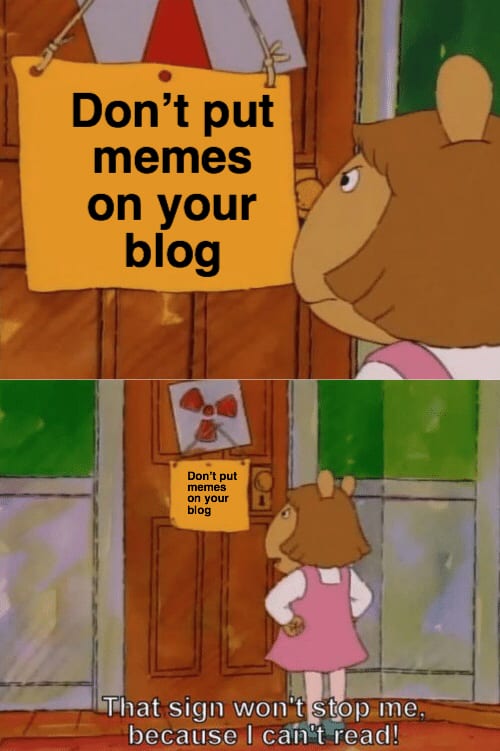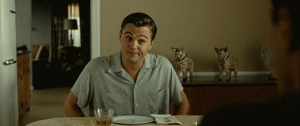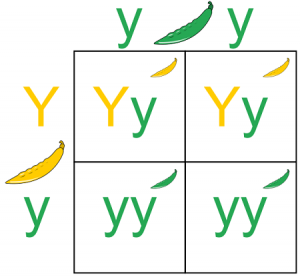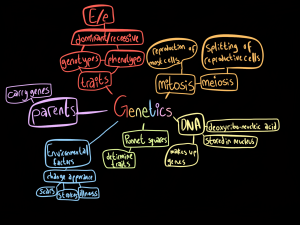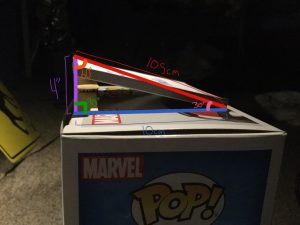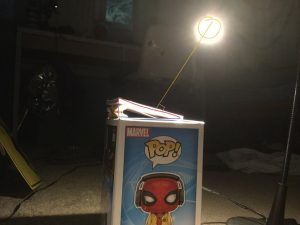Genes, Not Jeans
Science! It makes the world go around. Quite literally, if you look at physics and space science. Unfortunately, this isn’t about space today, otherwise there would be a lot more Star Trek jokes.
Today we’re talking about genes. Genetics, DNA, call it what you will. It’s what makes someone who they are. It’s why I have curly hair but Willa doesn’t, or why my dad’s eyes are brown but Tom Hiddleston’s aren’t.
Since this is PLP, we had to do a project on it. And, judging by all of Grade 10’s projects so far, I’ll give you a hint as to what it was. A podcast. Okay, that was a bad hint.
We had to make a podcast on genetics. But it’s such a broad topic, we needed a driving question. I teamed up with Willa to answer the question: if two sets of identical twins get married, and each couple has a kid, would the two cousins be identical?
First, we started off with reasearch. We used this website to help us with worksheets, and activities to help us figure out DNA, genetics, mitosis, meiosis, and so on.
What did one cell say to it’s sister cell when she stepped on his foot? Mitosis
One of the things used to determine the likelyhold of a child getting a certain trait is called a Punnet Square.
As you can see, this shows the likelyhold of a bean being green or yellow, based off of traits from its plant-parents. The plant-father has two small green y’s, which would mean a green colouring is recessive, and the father-plant is homozygous when it comes to its genotype. The mother-plant has one large yellow Y and one small green Y, making her heterozygous. The large Y is going to be dominant, and show up more often. The child-plant has a 50% chance of being heterozygous and a 50% chance of being homozygous with a recessive trait. If someone has a heterozygous genotype, the dominant trait will win. In this case, the mother-plant is yellow because she has a dominant trait, and the father is green, as it has no dominant traits.
Back to the project:
We did the research, and wound up writing a solid script. The podcast had to explain genetics like the listener knew nothing about it, and that was even harder with no visuals involved. But we did it. The final draft wound up being this:
I hope you learned more about genetics today! I had a lot of fun doing this project, as the driving question was really interesting to research.
And, to summarize, here’s a mind map of everything I learned:
Read Ya Later
Sincerely, Me
An Angle From Above
Math isn’t a subject I do posts about very often, mainly because in the past years we’ve done it, we haven’t done anything that we need to post about in Math. I think the last time I did a post in math was this. This year is different, as we’re doing math projects! I mean, what did you expect out of project based learning? So, for grade ten, the first thing we’re studying is trigonometry.
Mainly, how to find the angles of right angle triangles. This involves using a trick called SOH CAH TOA. Each three letters stands for how you find the angle. For instance, SOH would be: sin (the angle) =opposite/adjacent (the opposite and adjacent sides of the triangle). It’s a way to find an angle if you want to be more precise than a protractor.
Our project to do with SOH CAH TOA, as we had to do a project on solar panels, and the angles that they’re at to get the most amount of sunlight. This means researching stuff such as time of day, where your solar panel is, the angles that the sun is hitting it at, and the angles of your supports for your solar panel. It also had to include a bit of personalization, and a write up to explain your project a bit better.
Along the way, to help clarify, we did a lab based off of the project. We got one sheet of wood and put a solar panel on it, facing the nearest light source. Then, we added supports underneath, to see what the best angle for getting light was. It depended on where you were in the classroom, as everywhere was in different proximity to the lights. I did this lab with the wonderful Willa, because who else do I ever do anything with?
Then it was on to creating the project, and bringing it to life. Cue Frankenstein reference.
I chose to base mine in North Vancouver, in around October. (totally not because it’s october and I live in Vancouver what. Also, if you’re still reading, happy Halloween! If it’s not Halloween for you, happy whatever-day-it-is). Because in October, at the solar noon, it’s not directly above the solar panel, but it’s just off, so if you put the panel at the right angle on a flat roof, than it should absorb the most amount of sunlight.
Then it was on to making the model. My first draft was a picture of a 3D model I had made at home, with all of the measurements and calculations on it. Though, it just wasn’t enough.
I went onto the revision and the second draft, which I think went a lot better, as I put more effort into it and planned my time out so I could get it done on time. I have a bad habit with procrastination. This second draft included the proper calculations, and my write up was more detailed.
I guess you could say this project made me pretty… bright. Get it? Because the sun is bright? And solar panels? I’ll go home.
Onto the next project, I guess!
Read you later!
Sincerely, Me
World War One
Your friendly neighbourhood blogger returns.
So, grade ten. Back at it again with Humanities (also known as socials and English, if you didn’t know that). This time, we studied The Great War, World War One, WWI. We went a bit into this a few posts ago with discussing how World War One started. But now, we look at the actual war. We started by reading a graphic novel called Shattered Ground, which is on the topic of World War One, and talks about what it’s like to be a soldier on the battleground.
Next, we learned about all of the battles that Canada fought in using this website right here.
The second battle of Ypres is the first battle that Canada showed their resilience, as they fought through chemical gasses, shrapnel, bombs, and gunfire, and stopped the Germans from getting to the English Channel. Soon after this, the Canadians earned a rep that they were fearless. The Germans would fear them, actually. Go Canada.
Fun WWI Fact: Harry Houdini actually took a year break from his magic to help sell war bonds and teach American soldiers how to escape German handcuffs
While Canadians were risking their lives over seas in the war, that left many women back home, as they weren’t aloud to fight. So, women took over the men’s jobs. Working in factories, and on farms. Eventually, they were even given the right to vote.
Then, we talked about the Halifax Explosion
This was a tragedy that happened in Halifax during World War One. A ship exploded and wiped out most of Halifax. Since we’re focussing on podcasts this year, we did a class podcast about it. We read this article on it, each person getting one paragraph. The final product of it was this:
But, as with all PLP units, we had an end project to do. Our job: find a solider off of this website and do a podcast on them. I chose a soldier called Walter Thomas Hooper
He was a Welsh Man, who moved to Canada, and fought in the war. He died at the battle of Vimy Ridge, fighting for Canada.
We had to link back to the driving question of this project: How Did WWI Shape Canada’s Identity?
The first draft of my podcast was too short, and needed improvement:
I got some feedback, about grammar and how to make it flow more smoothly. Most people in our class had one issue: We had bad hooks. So, we worked on the first thirty seconds of our podcast. This helps set the tone for the entire podcast. If someone doesn’t like the first thirty seconds, how are they expected to like the rest?
And then it was on to finish the podcast. I made the mandatory adjustments, and this is it:
This really helped me understand World War One better, and made us go into detail about some of the people who died, and how bad it really was. Knowledge is power, after all.
I suppose that’s all, until next time
Read you later
Sincerely, Me

No Safety, Know Pain – Know Safety, No Pain
Safety is important. I think that’s given at this point.
So we started off science this year with Unit 0, which sounds more ominous than it is. It’s not an official unit, but we sort of count it as one. It’s lab safety!
Being safe in the lab is important, otherwise you can and will possibly die. We had to make a video expressing how to be safe in the lab. It was fun, despite the fact that I was sick when my group started filming.
Our video:
Lets start by saying that Willa’s fall there was genuine. It was really fun to make and produce. We did have ‘Never Gonna Give You Up’ by Rick Astley in there, but we had to change it because of copyright.
Stay safe!
Read Ya Later
Sincerely, Me

Friend Like Me
It’s time for yet another blog post (distant gasping). It’s almost like it’s part of our work.
So, we went on a school trip the first week of school. You know, that’s normal, going on a trip after one day of school. But it was fun, we went to a place of magic and mystery. Called Camp Capilano.
We started off by packing the night before. I packed light, managing to fit all of my things into about 3/4 of my backpack. I even managed to use one of those inflatable pillows that are the size of my hand until you blow it up.
Really uncomfortable, I’m never using it again.
Then the day came. We had a class beforehand where Hughes showed us a bunch of reality Tv show intros. Then we had to pick one character from each and write a brief write up on them.
We then got on the bus, and drove for like 20 minutes, until we got to the Cleveland Dam. Where I took this wonderful photo:
Thats when we had to make our own reality TV show character. It had to have ten characters, each with distinguishable traits, background music, and it had to be under 45 seconds.
In my group was Adam, Aiden, Sofia and Isobel
We wound up making the intro for a show called ‘The Broseph Bunch’. Here it is:
It was really fun to make, I got to do all the editing while the others acted and filmed
Then we had to hike (ew). We walked through a trail until we got to the actual camp site (see first image). It was very nice, the kitchen and dining hall was the main room, the girls off to the left and boys to the right. Behind the kitchen there was a common room, with a bunch of nice couches and stuff.
In that common room, after eating lunch and choosing beds (I got a top bunk), we all sat down and watched everyone’s videos. Then Hughes and Willemes announced the next project: We had to do around the same thing,.. with no video. This meant introducing ten characters with only audio, and a blank screen, with the same group. This one had to be a minute long, and we rose to the challenge.
We made a show called ‘The Baker Bunch’ (why are we so obsessed with the letter B? Who knows. So B it). It was sort of like the Kardiashians. Anyways, here’s the podcast(?)
That was only the second project of the trip. The third one was… a bit longer.
We had to make a podcast that was 4 minutes long. Not 4:05, not 3:50. 4:00 Exactly. I worked with the ever wonderful Willa to make the best podcast. We had to make a four minute podcast based around the idea of ‘identity’. It had to be a personal story that helped identity in some way. We debated through a lot of ideas, until we found ‘The One’.
Our plan was to talk about my experience in musical theatre. If anyone knows me, they know I love musicals. From Hamilton, to Be More Chill. So we decided to talk about my first musical… and how it was so terrible it made me never want to do musical theatre ever again. It’s a great story, really.
First we had to write a script. This actually took the longest. Because writing something that looks like an essay is great. But then you read it out and it’s two minutes… not so great. We kept on having to add on things, until we got it perfectly to four minutes. The end result:
I’m quite proud of it, despite the fact that I dislike the sound of my voice on tape
Well, that’s all for this blog post
Read Ya Later
Sincerely, Me

The One On How World War One Started
Our latest unit in humanities has been all about World War One, the war to end all wars, even though World War Two happened. Besides that, before we can get into the history of the war, we need to talk about how it began.
Now, here’s my idea; the war started because of the assassination of Archduke Franz Ferdinand.
On June 28th, 1914, a man from Serbia shot and killed Ferdinand in Sarajevo. He went there on a trip, and there were multiple armed terrorists around him, waiting to take a shot. Some people actually did shoot at he car, but missed him and hit some of his men. The car later stopped right in front of one of the terrorists. He shot the Archduke and his wife, killing them both.
Austria-Hungary obviously wasn’t pleased with this, so they declared war in Serbia when they heard about the assassination, seeing it as a threat on the country. Russia was allied with Serbia, so Russia declared war on Austria-Hungary and Germany. Germany invaded France and Britain, and that’s how the war began.
We also had to create a visual showing this, so I decided to do a stop motion on the Domino Affect of how World War One started:
The video took me a while to make, because I had to draw each frame individually, then put it together and add text and music.
It also didn’t help that my first plan didn’t work out so I had to totally restart
Well Thats all for this post
Read Ya Later
Sincerely, Me

The One Where I’m Back
I’ll give you a hint: it’s not Shady. It’s me, your friendly neighbourhood blogger
So, we’re back into school. Which means more posts! This one in particular is about goal setting. No, not soccer. I don’t sport. This is about setting goals for your future. More specifically, SMART goals.
Now, a SMART goal is a goal that is a bit more specific than regular goals. SMART is actually an acronym, that stands for
Specific
Measurable
Attainable
Relevant
Timely
Thats what makes up a SMART goal.
The next step in this was to make three SMART goals for myself. One that had to do with learning inside of school, one about character growth, and one about learning outside of school. Doing this involved writing it out, creating a visual for each, and then also recording our voice saying it.
Ive got the small issue of ‘I’m sick’ going on, so I can’t really speak right now. I will try and get the audio recordings up here as soon as possible. Until then, you’ll just have to do more reading. That’s fine, reading makes you smart.
In School Learning:
I would like to hand my work in on time for school, so that I don’t have late assignments. I can do this by setting aside time after school to do my homework, while also giving myself breaks so I don’t overwork myself too much. If the assignment is over a few days, I can set checkpoints of what I can do each day to make sure I get the work done on time.
Character Growth:
I’d like to be able to take leadership more and be confident in my work. I can do this by putting more effort into my work, and putting my own personal touch to it so I enjoy doing it and I feel more confident in the final product.
Out Of School Learning:
I’d like to expand my knowledge of cooking outside of school, so that I can help make dinner at home and generally know how to cook. I can use the recipes I get in my foods class, as well as look up recipes online, and help to make dinner once a week at home.
So that’s all for this post! I hope this helped you in some way, and maybe you can get on the path to make your own SMART goals.
Read Ya Later
Sincerely, Me

The One About The Most Important Moment In Canadian History (AND THE FINAL BLOG POST)
It’s the final blog post (bad kazoo of the final countdown)
This one is about the most important moment in Canadian history. We had to pick one topic and argue our point in any way possible about why it was the most important moment in our country’s history. I chose the building of the railway. And how did I chose to explain it?
A vlog. For those who don’t know what that is, that would be a video blog. Pretty much I filmed myself talking about why it’s important. And here you go:
Read Ya Later
Ruby

The One About A TPoL
It’s time for another SLC. Well…. not exactly. It’s called a “Transitional Presentation of Learning” (or TPoL, take your pick)
In this post, I’m going to be talking about a few things: my growth as a learner, my work ethic, and my abilities of revision, team work, responsibilities, and high quality work as a PLP learner.
I think something that shows my growth as a learner would be my ability to be more positive about my work. At my last SLC I was told that I’m really negative about work that I don’t like. So I’ve been trying to improve on that. I’m going to show two videos, one from the very start of the year and one from just a few weeks ago
This is the first video I made in grade 9. I don’t sound very enthusiastic, and I know I could have done better. But I wasn’t doing it because I enjoyed it, I did it because I had to. I know this could have been better if I had been more positive a found a way to make this enjoyable.
This one I’m a lot prouder of. I found a way to make this my own and make it interesting for me to work on, by putting it in a story book format and drawing on the pictures to make special effects. I was a lot more positive about this project because I made it enjoyable, and I plan to do this in the future in grade ten with all of my work
Next is my work ethic. One thing that shows my work ethic would be my frankenstuffy project. I put a lot of time and effort into this, and I made sure nothing was late or badly done. I set myself a timeline of what had to be done when and I did it, and I’m really proud of that.
The final things are my abilities of revision, teamwork, responsibilities, and high quality work. I think thing that sums this all up would be DI take two, the Provincials. We took the critique we got and improved on it, making our script stronger and improving our codes and our gadget. We worked as a team to do that, giving everyone something to be responsible for. In the end, I think it went well. And we won first place so that’s what matters here
And we’re done!
Read you later
Ruby

The One Where I Am Eugene
Before we begin, let me explain the title. It’s a pun, you see (Credit to me)
Is your name Eugene? Because Eugene-ius.
Just let that sink in, say it out loud, and then laugh and show your friends.
Anyways, why am I Eugene?
Besides being a slytherin, its back to the genius pun.
For blue sky this year, I made…. a folder backpack. Yes, I have made a backpack with a folder inside for organization.
During this blue sky journal, we had to write a journal along to way. So instead of rewriting everything, I’ll let that explain everything:
Phase 1:
Students have an issue being organized. Sure, there are the special few who know how to do it, but for the most part it’s hard. So I decided to make a backpack that helps student organize their papers so they don’t crumble and die at the bottom of the abyss that is a school backpack. One file space for each subject, plus an extra for maybe a spare notebook or those little doodles you what to keep.
I was really drawn to this because I know around grade 5 is when my backpack started becoming a horror show. Ripped papers, assignments lost, notes covered in last week’s yoghurt that spilled everywhere and now smells bad. So this backpack would have really helped me back then so I didn’t get into bad habits. It saved the bother of a binder, which could be forgotten at home, and is such a pain to flip to the right page. It’s a portable file, and I think it will really work out.
Phase 2:
The next challenge is actually going through with the idea of making a backpack folder (not the official name). First step is questions. And a lot of them. More specifically, a lot of ‘How Might We’ (HMW) questions. For mine, there was quite a few. How might we help tweens be more organized with their schoolwork? How might we make sure teachers don’t receive crumpled papers? How might we get good organization habits for students for the future? How might we make sure homework doesn’t get lost or ruined?
So, as you can see, these questions break down the project into seeing what it’s really for, and what it accomplishes. So, here’s a more detailed layout of my project: Making a backpack that helps organizes papers for tweens so they don’t crumple up papers and get into bad organizational habits for when they’re older. Next: let’s tackle the problem.
Phase 3:
Next is research. I’m having to research not a lot, besides teen organization habits. Luckily, my girl guide group is full of tweens, so I had no issue discovering tweens do actually just shove a lot of things in their backpack. I also researched how to deconstruct a backpack, hoping I can use that to insert the folder easier.
I then went on to make my first prototype. It’s just a blueprint, but it’s going pretty well. It lays out the basic ideas of what I want it to look like, and I hope the final product looks as well!
Phase 5: My first prototype is a blueprint of the backpack. Along with labels and a detailed drawing, it highlights the sections of the folder. It’s just a basic idea of how I want it to look, but I hope everything goes according to plan
Phase 6: I made a second prototype. It’s really small, using a doll’s backpack. I’ve glue gunned a folder into there, hoping it will stick. I think I’m going to need to revise, as the folder is in the wrong way. It opens like a book, which doesn’t really work for putting papers in easiest. I’m thinking of flipping the folder, but the glue gun is working so far
Phase 7: And it’s all done. After revision and making a short video, it’s done. The full sized backpack works really well, it can hold around ten different sections of a folder. I’m really proud of how it turned out. I made a video explaining the creation of the final product, which is on YouTube to see.
The final product wound up looking like this:
Yes, those are gummies. The only proper thing to bring in your backpack.
So that’s all for this post. I hope you enjoyed
Read ya later
Ruby
